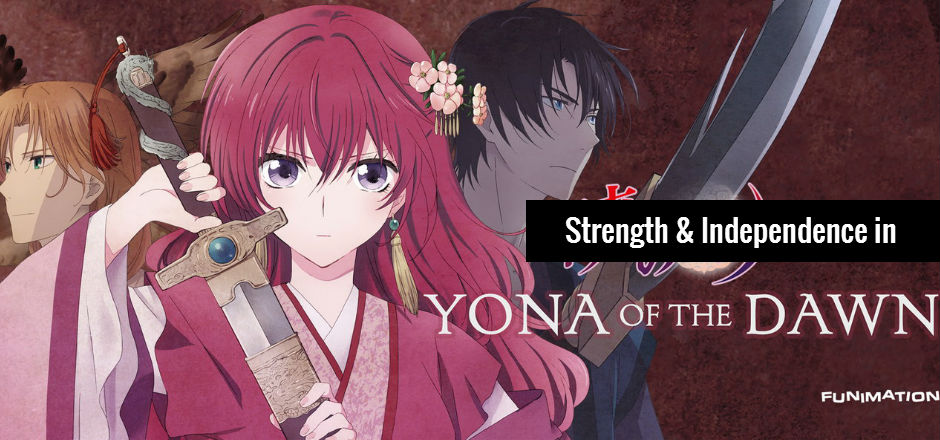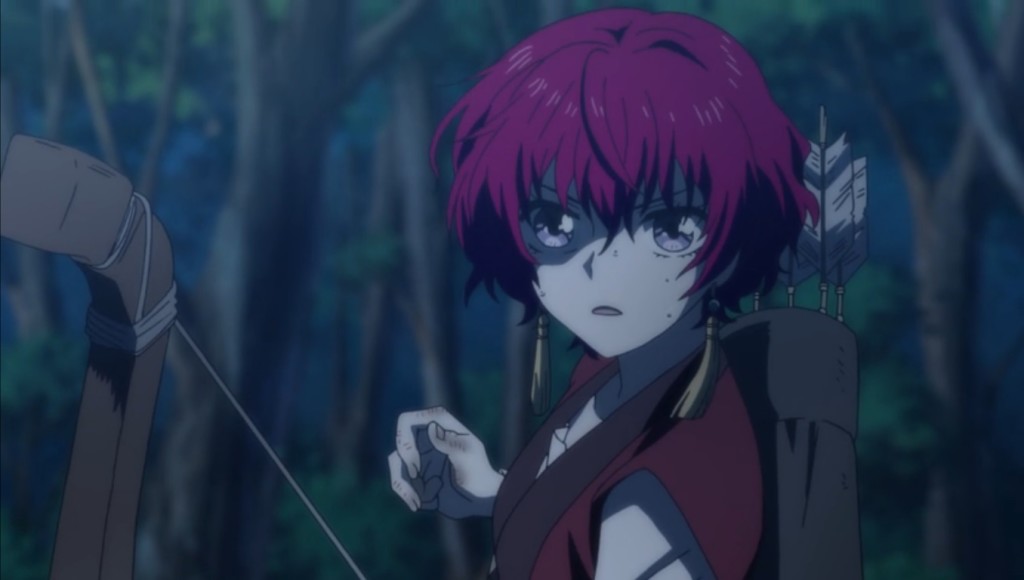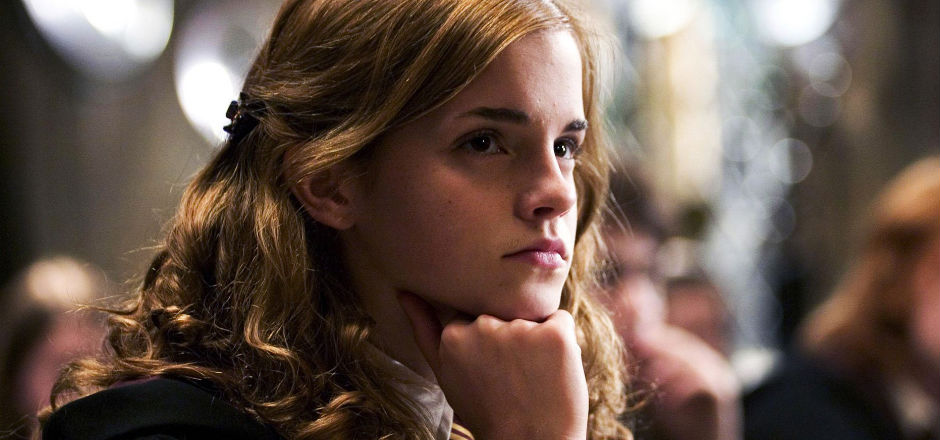Author’s note: This article contains spoilers for the anime Akatsuki no Yona: Yona of the Dawn.
July is officially “The Independent Issue” here at Girls in Capes. So, in celebration of our theme, of Independence Day, and of my own recent independence (I just moved into a new apartment), I finally sat down and watched Akatsuki no Yona: Yona of the Dawn (暁のヨナ).
Yona is set in a Korea-inspired fantasy world in the fictional kingdom of Kouka. It begins by introducing viewers to the title character, Princess Yona, who has been banished from her home at Hiryuu Castle after the murder of her father, Emperor Il, at the hands of her cousin and sweetheart, Soo-won. Accompanied by her childhood friend and bodyguard Son Hak, the former general of the Wind Tribe, Yona escapes the Imperial Capital Kuuto and sets out on a journey to learn about the truth of her ancestry and gain the strength she needs to survive and help the people of Kouka.
Prior to her journey, Yona lived a fairly sheltered life in Hiryuu. She was told and came to believe that her father was a kind and fair leader who through his pacifism maintained peace and prosperity in Kouka for about a decade. As Yona’s journey takes her to a variety of villages throughout the kingdom, including to the Wind Tribe’s central town, Fuuga, and eventually to the port town, Awa, she learns that her father’s reign was not as successful as she previously thought. Emperor Il often surrendered parts of Kouka Kingdom to nearby kingdoms in order to maintain peace and failed to stamp out corruption among the five elemental Tribes. Yona witnesses some of the results of Emperor Il’s policies throughout the series, but especially in Awa Port, where poverty and human trafficking have been left unchecked.
Themes of growth, strength, courage, and independence are apparent throughout the show. Yona struggles with the fact that Soo-won, who she thought she could reply on and trust and who she deeply loves, has betrayed her. As the shock of her father’s murder begins to wane, Yona realizes that there are other people in her life that she cares about and wishes to protect. Hak is among these people, but so are the companions she meets along the way.

Zeno (Yellow Dragon), Jae-Ha (Green Dragon), Shin-Ah (Blue Dragon), Ki-Ja (White Dragon), Princess Yona, Son Hak, and Yun in the opening sequence of YONA OF THE DAWN.
Soon after their escape from Hiryuu, Yona and Hak meet Yun and the High Priest Ik-Soo who informs Yona that she is the incarnation of the famous Red Dragon, King Hiryuu, and that she is the legitimate ruler of Kouka. She learns that there are four other dragon descendents who are her sworn guardians, including the White, Blue, Green, and Yellow Dragons. And that if she wishes to gain their protection, she, Hak, and Yun must travel throughout Kouka to find them.
As Yona’s traveling party becomes larger throughout the series, she comes to realize that she wants to protect her friends just as much as they want to protect her. In order to gain strength and to be able to defend herself, every night when her traveling companions are asleep, Yona practices with the bow and arrows Hak gave her in episode nine, firing two-hundred arrows into a target.
“I have to become stronger,” Yona says in episode fifteen as she works hard to improve her bow skills. “I have to become stronger. So I don’t lose Hak or anyone else! What can I do?”
She’s shaky at first using the bow and reluctant to go against her father’s wishes and to take another person’s life. But as the series progresses, Yona conquers her fears and learns to wield her bow with a steady hand. She even takes up interest in learning swordplay by the end of the series. Standing on a cliff side with her eyes blazing and the wind in her hair, the ending alludes to the possibility of another season of the show.
Yona is a strong shoujo fantasy adventure with an emotionally complex lead character who I could relate to and admire. The death of her father and the betrayal of her first love is a horrifically traumatic experience, and Yona responds appropriately, first with shock and sadness, but eventually with determination and strength. At first, Yona is incredibly depressed about her predicament, particularly because of her broken heart over Soo-won. But as she comes to realize that all she knows about the world came from her sheltered upbringing in Hiryuu Castle and that there’s a whole world out there that she will get to experience, Yona finds her own strength and courage and is determined to learn as much as she can from Hak and her companions.
Unfortunately, Yona does not pass the Bechdel test. It could be considered a reverse harem anime, since all of Yona’s traveling companions are male, and Yona doesn’t talk to any other female characters until around episode eighteen. Even so, Yona is an interesting and multifaceted female lead. At first, I thought that Yona was going to be similar to Princess Mononoke (もののけ姫), with Yona living in the forest, traveling around, and kicking the Sky Tribe’s arse with her bow skills and maybe even an army. Instead, Yona is a very different character from San in Princess Mononoke. Some of San’s strength comes from her hatred for humans and the destruction of the forest while Yona’s strength comes from her desire to protect her friends and make Kouka a better place.
Also, as the series progressed, I realized that the show is more similar to Fruits Basket (フルーツバスケット). This shouldn’t have come as a surprise, since both Yona and Furuba—as Fruits Basket is lovingly called by fans—are shoujo anime and include characteristic shoujo traits, including cute chibis for funny moments and subtly inappropriate sexual jokes. Both shows have a lovable female lead surrounded by many male friends and companions. Hak, Yun, the White Dragon, the Blue Dragon, and eventually the Green Dragon are very protective of Yona. And in Furuba, Tohru is cared for by Kyo, Yuki, Shigure, and the rest of the Sohma family. Unlike Yona, however, Furuba passes the Bechdel test, as Tohru’s best friends, Arisa and Saki, are female, and Tohru makes many additional female friendships throughout the series.
One other aspect of Yona that I especially enjoyed was the beautiful art and the Korean influence, which is especially apparent in the architecture and clothing depicted throughout the series. Yona’s primary dress, for example, is inspired by hanbok (한복), a traditional Korean dress worn by both women and men. And Hiryuu Castle looks very similar to Changdeokgung Palace built during the Joseon Dynasty in modern-day South Korea.
I highly recommend Yona of the Dawn, especially if you’ve liked other period anime, like Genji Monogatari Sennenki, or fantasy anime, like Inuyasha, or shoujo anime, like Fruits Basket. Yona is also an ongoing manga, written and illustrated by Mizuho Kusanagi, currently being serialized in the shoujo magazine Hana to Yume. The manga has not been licensed in the U.S. yet, but the twenty-four episode anime, which was released in fall 2014, is available from Funimation, and you can watch online on Crunchyroll and Hulu.
—
Rine Karr is an Anime Writer at Girls in Capes. She’s a writer and aspiring novelist by moonlight and a copyeditor by daylight. Rine loves good food, travel, and lots of fiction, especially novels, anime, manga, video games, and films. She’s also the Chief Copyeditor and an occasional contributor at Women Write About Comics.
If you want to learn more about anime, we recommend checking out these excellent magical girl series streaming now and thought-provoking anime for geeks new to the genre.







Excellent article! I am glad that more and more people are recognizing what a well-done series Akatsuki no Yona is. On the topic of the Bechdel test… I noticed the same thing when I watched the anime first time around. However, you will be pleased to know, that a little bit later on in the manga, more and more female characters start popping up, all with fantastic personalities! I sincerely hope that a second season is announced because I’m very excited to see these girls animated.